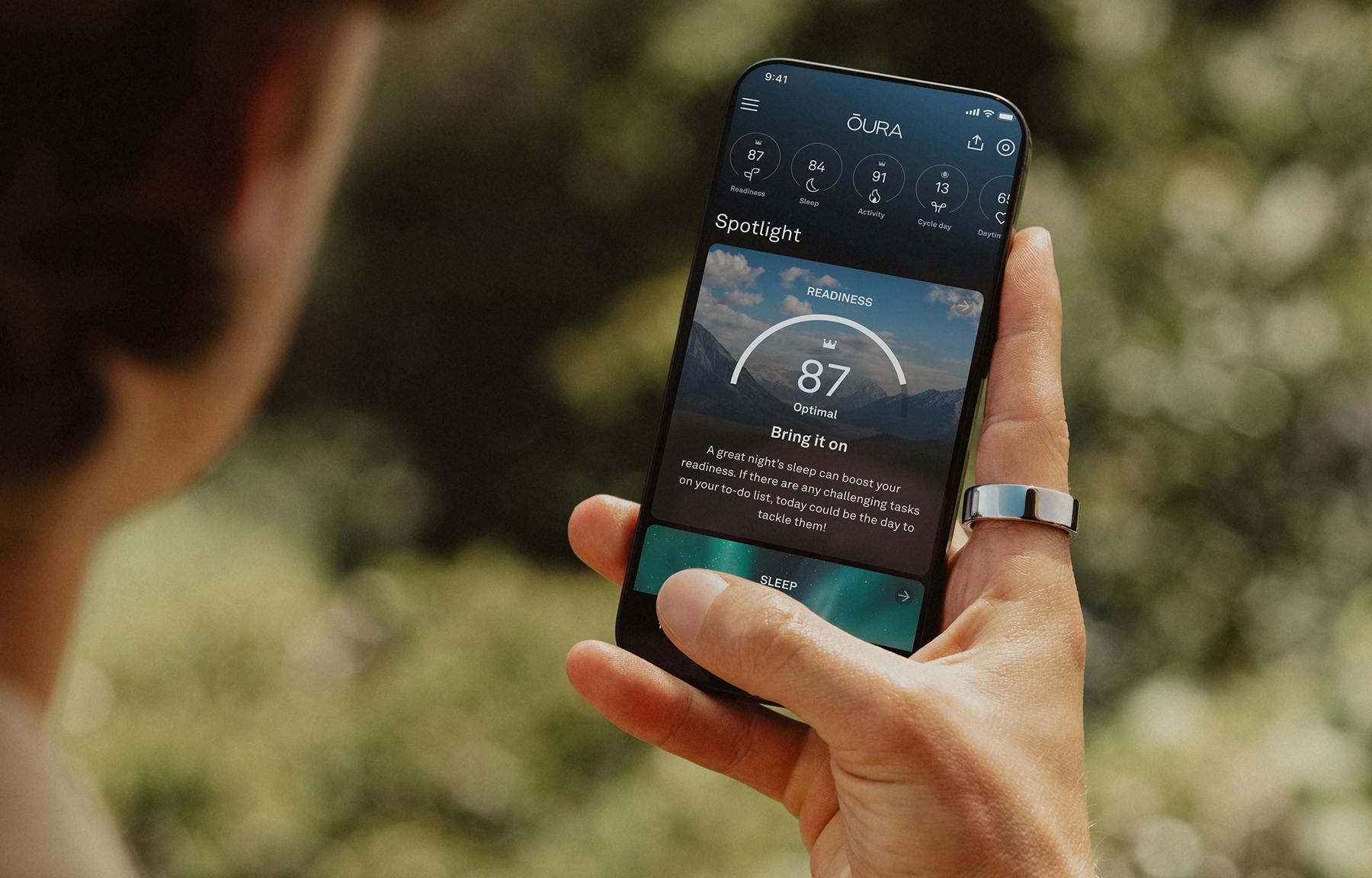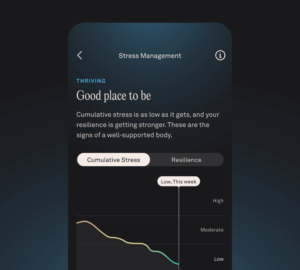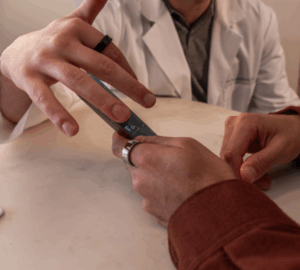Keeping your glucose levels within healthy ranges has a number of benefits, from your day-to-day energy levels to future health outcomes.
Ultimately, being proactive is essential when it comes to glucose balance. Here, we’ll cover the basics of non-diabetic hyperglycemia, symptoms of high glucose, and some surprising causes of glucose rises in non-diabetics.
What is Non-Diabetic Hyperglycemia?
Hyperglycemia is when your glucose levels are higher than normal. While it’s often associated with diabetes, non-diabetics can experience it too.
If you’re a healthy individual, you’ll want to keep your fasting blood glucose levels between 70 and 100 mg/dL. Current guidelines indicate that if your fasting blood glucose levels are above 100 mg/dL (5.6 mmol/L), you may have insulin resistance.
At the same time, you’ll want to pay attention to how much your glucose levels rise after eating, also known as postprandial glucose. While it’s hard to provide clear-cut standards regarding your postprandial glucose levels, it’s reasonable to aim to keep your glucose rise under 40 mg/dL (<2.5 mmol/L), and ideally <30 mg/dL (<1.7 mmol/L). Two hours after eating, your glucose levels should be below 140 mg/dL (7.8 mmol/L). The goal is to minimize your glucose variability, or how drastically your glucose rises and falls.
In a 2019 study published in the journal Medicine, researchers found that the risk of cardiovascular disease and mortality in a general non-diabetic population was greater in subjects with higher glycemic variability. This underscores the importance of minimizing glucose fluctuations, even in healthy, non-diabetic individuals.
| Member Tip: When you pair the Stelo Glucose Biosensor with Oura, you’ll see continuous glucose values in the Oura App, showing how your meals, activity, sleep, and even stress impact your glucose levels. |
Symptoms of High Glucose in People Without Diabetes
If you don’t have a glucose biosensor and are curious about the main symptoms of high glucose in non-diabetics, you’ll want to look out for the following signs:
- Increased thirst/hunger
- Frequent urination
- Headaches
- Fatigue
- Blurred vision
However, symptoms aren’t always apparent and instead can take months or even years to manifest. This is why regular check-ins with your doctor and potentially using a glucose biosensor like Stelo to track glucose levels are essential for staying on top of your metabolic health.
What Causes Glucose to Rise in Non-Diabetics?
Several unexpected factors can cause elevated glucose, even if you’re metabolically healthy. Here are several of the most common.
1. An Unhealthy Diet
Some foods are more likely to spike your glucose even if you’re metabolically healthy, such as refined carbs, processed foods, sodas, and items that contain added sugar.
If you have a sweet tooth or carb cravings that tend to veer you off course from an otherwise healthy diet, you’ll want to be extra cautious of sudden rises in glucose, which over time can lead to insulin resistance, i.e., how responsive your cells are to insulin, the hormone that regulates the amount of glucose in your blood and “unlocks” cells so they can turn glucose into energy.
Ideally, fill your fridge and pantry with whole, minimally processed foods that are free from refined sugar and flour. Make sure to include colorful vegetables and fruits, which are rich in phytonutrients.
READ MORE: The Essential Guide to Eating for Metabolic Health
2. Dehydration
Staying hydrated is one of the best things you can do to promote overall wellbeing—and that includes promoting metabolic health. According to a 2017 study, research demonstrates that consistently low water intake is associated with an increased diagnosis of non-diabetic hyperglycemia. (Less water means less blood volume, which in turn results in a higher concentration of glucose in your blood.)
Beyond not drinking enough H2O, other surprising causes of dehydration may include:
- Excessive sweating
- High altitudes, which increase both respiration and urine output Low-carb diets, as carb-rich foods typically contain more water and electrolytes, and when your body uses up its stored glucose, it has a diuretic effect
- Diarrhea
- Aging, since the body naturally holds less water as we get older
- Breastfeeding, which increases fluid demands
- Not eating enough water-rich foods, such as cucumbers, celery, and watermelon
These causes can be cumulative, so even mild dehydration may affect your glucose regulation without you realizing it.
3. Meal Timing
A key component of stabilizing your glucose levels isn’t just paying attention to what you eat, but also when. Your body’s insulin sensitivity isn’t static—it fluctuates throughout the day.
As studies have noted, there is an intrinsic “circadian rhythm in insulin sensitivity,” with reduced sensitivity/higher glucose levels at night (meaning it’s best to space out your carb intake throughout the day and avoid saving it up for dinners or evenings).
You may also notice that your glucose is higher in the morning. This is known as the “dawn phenomenon,” in which the liver revs up glucose production, prompting your body to rise and shine. This may cause high glucose levels if insulin can’t keep it in check.
4. Genetics
If metabolic dysfunction runs in your family, you may be at greater risk of developing non-diabetic hyperglycemia.
However, the good news is that a family history of diabetes doesn’t guarantee that you’re destined to struggle with metabolic issues. By eating the right food and practicing healthy lifestyle habits, you’ll have a better chance of maintaining healthy glucose levels.
5. PCOS
Polycystic ovarian syndrome (PCOS) is a common hormonal disorder amongst women of reproductive age that can negatively impact metabolic health. According to a medical review in Reproductive Health, as many as 50% of women with PCOS are insulin resistant. Insulin is necessary to maintain steady blood glucose; an excess of it and/or resistance to it can cause glucose to build up in the blood, resulting in high blood glucose.
RELATED: How This Member Navigates POTS With Oura Data
6. Exercise
Research has shown that exercise is one of the best ways to improve insulin sensitivity, which can help you stabilize your glucose levels and reverse insulin resistance. But if you use a glucose biosensor, you may have noticed that your glucose levels actually increase after exercising.
This happens because your liver, a glucose storehouse, releases glucose into the bloodstream so your muscles have enough energy to complete a workout, which registers as a spike. This is particularly true of demanding exercises like HIIT. These types of spikes are completely normal and temporary, so don’t worry about them too much.
7. Illness
When you’re sick, your body produces more cytokines, small proteins that signal the immune system to act. However, cytokines make your cells temporarily insulin-resistant. As a result, your muscles and liver can’t use up all the extra glucose circulating in your bloodstream, leading to higher-than-usual levels. The sicker you are, the more likely you’ll see a spike in your glucose levels, but they’ll go back down once your body recovers and reduces its production of cytokines.
How to Stabilize Glucose Levels
If you’re non-diabetic yet have high fasting glucose, you’ll want to take care to address any underlying causes before it evolves into more serious health issues. While your family history and certain health conditions, such as PCOS, may heighten your risk of non-diabetic hyperglycemia, you can mitigate your risk through healthy dietary and lifestyle habits.
Of course, limiting your intake of certain foods and being mindful of eating patterns that can cause high blood glucose is key. But it’s just as important to keep your body moving, get enough sleep, and manage stress on a consistent basis to avoid insulin resistance and ultimately normalize glucose levels.










